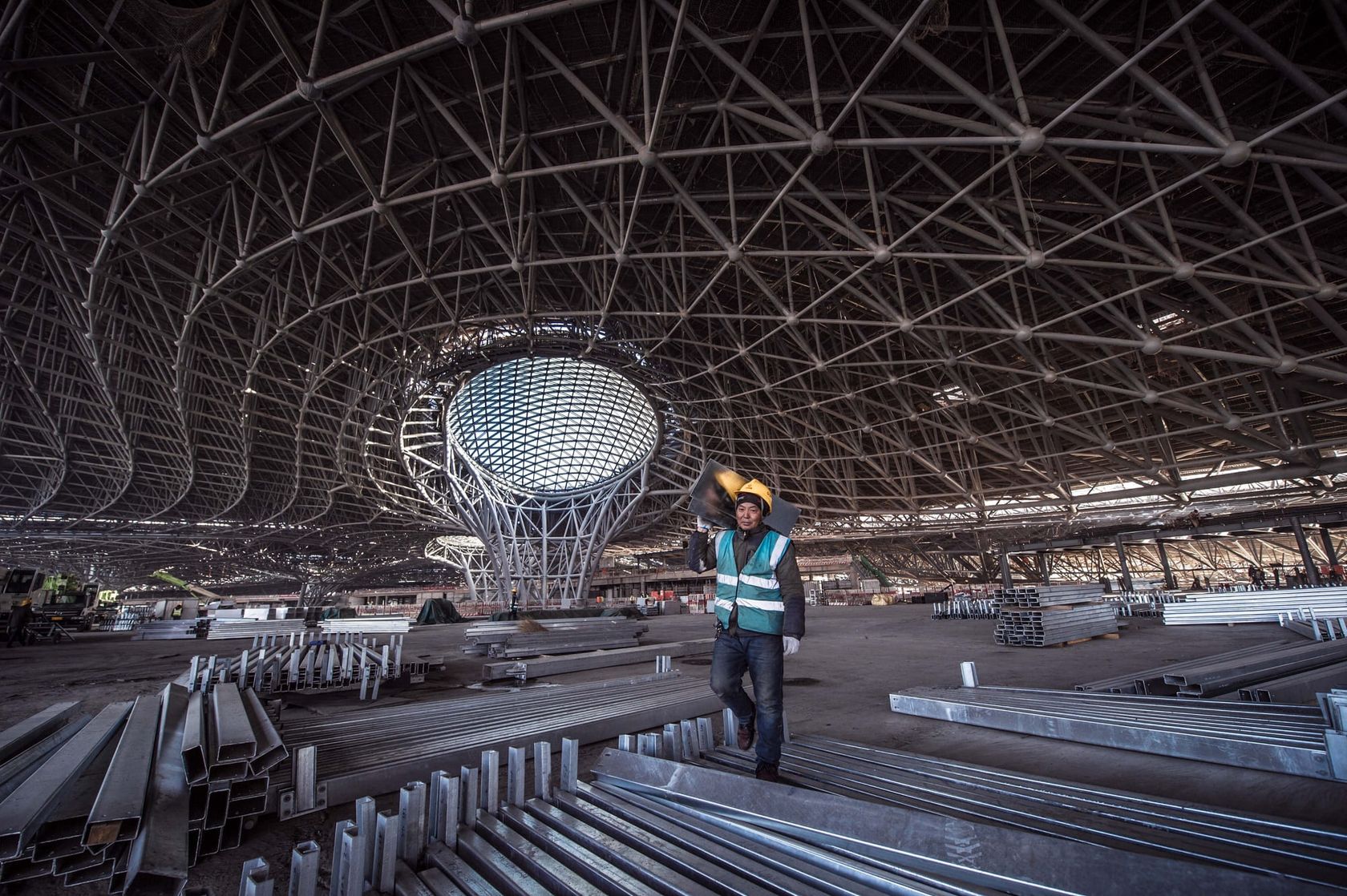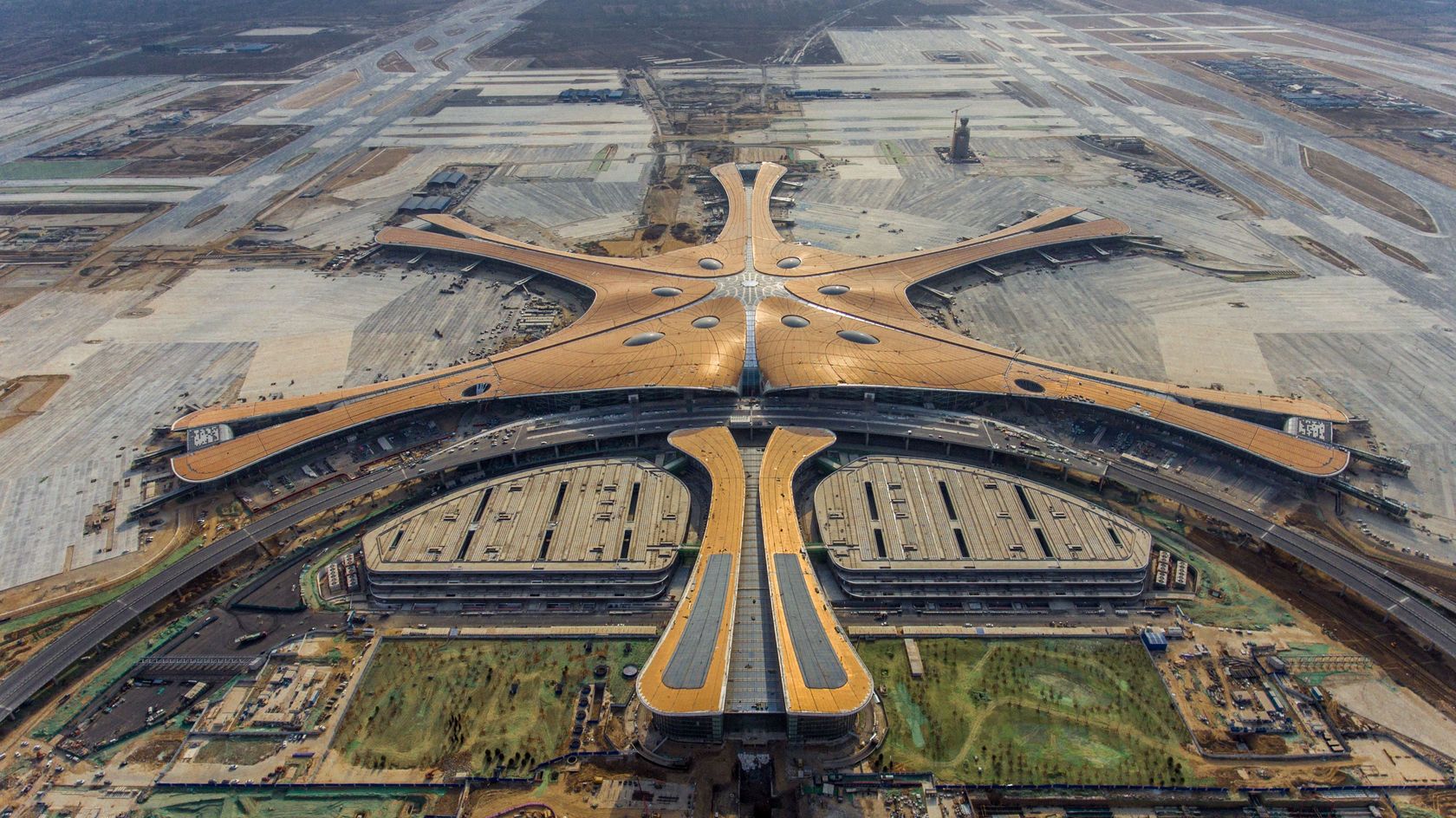Airport size and location
Construction of Daxing International Airport began in December 2014 and the terminal’s steel structure was ready in June 2017. The air hub has an area of 18 square kilometers. Its budget was roughly US$14 billion. The airport expects to receive 630,000 flights a year. Totally 40,000 people worked on the project. The frame of the airport contains 52,000 tonnes of steel. Its roof weighs 30,000 tonnes and has an area equal to 25 football pitches. Four runways are already operating, and their number will eventually increase to seven.
Guo Yanchi, the chief engineer responsible for the construction work:
"Beijing Daxing International Airport is the world’s largest integrated transport hub. The building, which is based on a seamless steel structure, is the largest in terms of size. Another point of pride for the airport is its unique design that incorporates two-tier departure and arrival platforms."
The new airport is located around 40 kilometres from Beijing. Passengers can get to it from the megapolis by trains that reach speeds of up to 349 kilometres an hour. Residents of 28 other cities can travel to the airport on high-speed rail lines and highways that are currently under construction. Underneath the airport terminal, a transportation centre will be opened with rail and road junctions.
Airport design
Zaha Hadid, an Iraqi-British architect with worldwide acclaim, worked on the project until her death in 2016, infusing the futuristic design with the likeness of a phoenix, while the Chinese media have nicknamed the airport “starfish” due to its shape.
The design concept is founded in traditional Chinese architecture, with a central courtyard surrounded by all other spaces. The airport’s six elongated branches are connected by a central hub.
The building’s form follows its function: the airport’s shape helps to easily direct all passengers from the departure, arrival and transfer zones to the central hub, where all services are concentrated. Thanks to this design, it takes passengers less time to get from the registration area to their gate. The distance from the central hub to the furthest gate is just 600 metres and takes just eight minutes to walk. Baggage arrives 13 minutes after the plane lands.
Complex technological solutions were employed in the airport’s construction. Thousands of dampening elements are built into the building’s steel base. They create a layer that cushions and compensates for the vibrations from airplanes taking off and trains rushing by at high speed.
Beijing Daxing Airport’s advanced technology also ensures passenger safety: its facial recognition system is based on artificial intelligence. However, this transport hub is known not just for its technology. Five traditional Chinese gardens are situated in the waiting areas, an ideal place for passengers to pass time while waiting for connecting flights. The design incorporates traditional Chinese materials and colors, including wood and stone, as well as smooth clean lines and large windows. The open spaces and natural light make the airport resemble scenes from science fiction films.
The airport has an energy-efficient design that uses a window shading strategy. Only environmentally-friendly vehicles will serve the airport. The airport also features rainwater collection and natural ventilation systems.
Beijing Daxing International Airport is more than just a miracle of modern architecture and technology: it is an advanced infrastructural solution for China. According to Bloomberg’s preliminary estimates, the airport will be able to serve 72 million passengers a year by 2025, a figure that will rise to 100 million by 2040.


